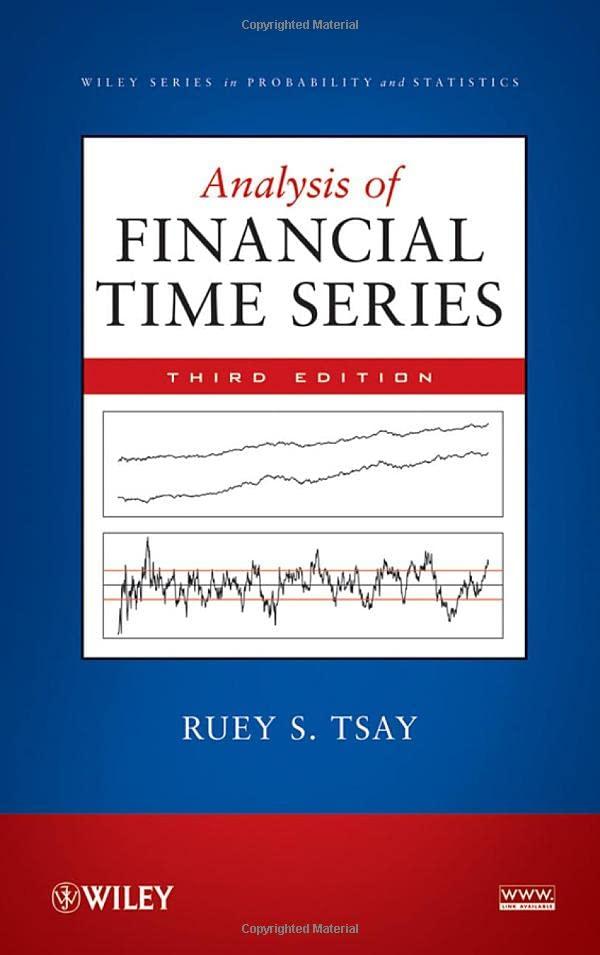Because of the existence of inverted yield curves in the term structure of interest rates, the spread
Question:
Because of the existence of inverted yield curves in the term structure of interest rates, the spread of interest rates should be nonlinear. To verify this, consider the weekly U.S. interest rates of (a) Treasury 1-year constant maturity rate and (b) Treasury 3-year constant maturity rate. As in Chapter 2, denote the two interest rates by \(r_{1 t}\) and \(r_{3 t}\), respectively, and the data span is from January 5, 1962, to April 10, 2009. The data are in files w-gs3yr.txt and w-gslyr.txt on the Web and can be obtained from the Federal Reserve Bank of St. Louis.
(a) Let \(s_{t}=r_{3 t}-r_{1 t}\) be the spread in log interest rates. Is \(\left\{s_{t}\right\}\) linear? Perform some nonlinearity tests and draw the conclusion using the \(5 \%\) significance level.
(b) Let \(s_{t}^{*}=\left(r_{3 t}-r_{3, t-1}\right)-\left(r_{1 t}-r_{1, t-1}\right)=s_{t}-s_{t-1}\) be the change in interest rate spread. Is \(\left\{s_{t}^{*}\right\}\) linear? Perform some nonlinearity tests and draw the conclusion using the 5% significance level.
(c) Build a threshold model for the \(s_{t}\) series and check the fitted model.
(d) Build a threshold model for the \(s_{t}^{*}\) series and check the fitted model.
Step by Step Answer:





